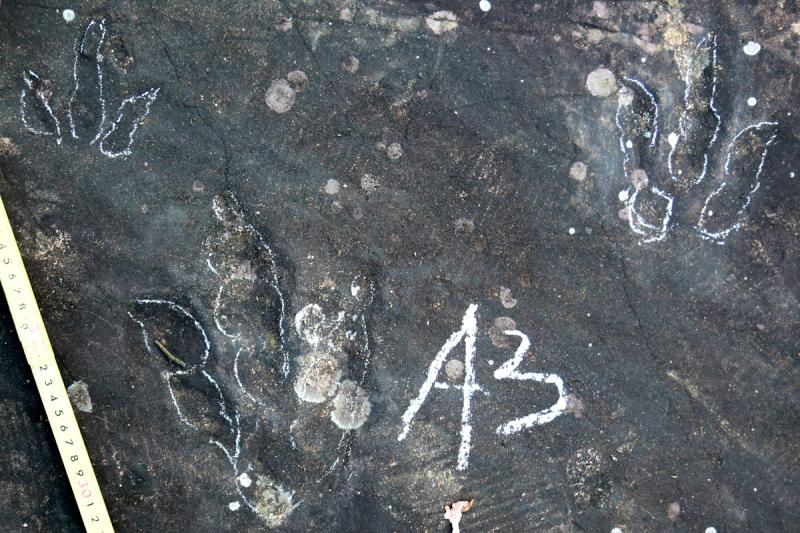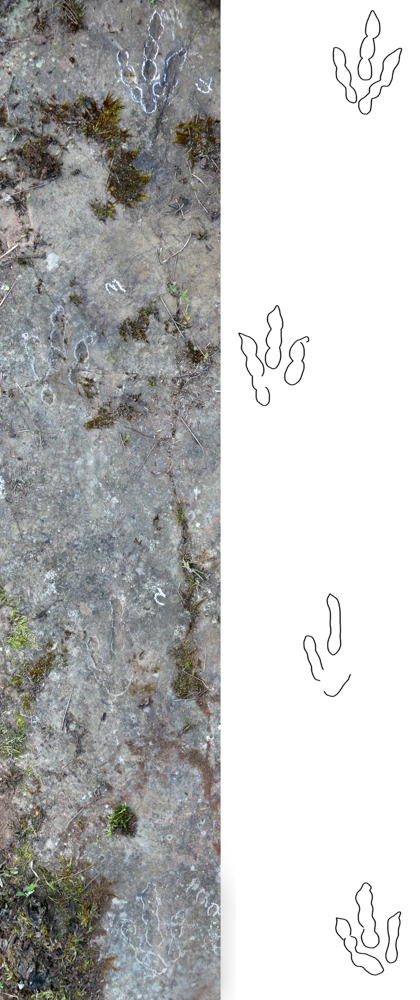
Scientists discovered theropod footprints in southwest China's Guizhou Province. (Photo provided to Xinhua)
These fossils are believed to be left by small and medium-sized theropods and sauropods dating back to the early Jurassic period.
BEIJING, Feb. 8 (Xinhua) -- A team of international scientists announced that they have discovered a group of early Jurassic dinosaur footprint fossils in southwest China's Guizhou Province.
The team consisting of experts from China, the United States and Germany found the fossils containing diverse dinosaur tracks in sandstone in the province's Hezhang County.
These fossils are believed to be left by small and medium-sized theropods and sauropods dating back to the early Jurassic period, according to Xing Lida, lead researcher of the team and an associate professor with the China University of Geosciences.
Four tracks were discovered with 31 theropod footprints of carnivorous dinosaurs sizes ranging from 14 to 19 centimeters. They suggest that a dinosaur was trotting at a speed of 10 km per hour and the other three were walking at speeds of 3.6, four and six km per hour, respectively.
Another theropod footprint is believed to be left by a plant-eating dinosaur.

Scientists discovered theropod footprints in southwest China's Guizhou Province. (Photo provided to Xinhua)
There was also a discovery of tracks formed by nine sauropods footprints with an average length of 26.8 centimeters.
According to scientists, the new findings indicate the trackmakers have strong mobility, wide species ranges and complex behaviors. They can help people understand the distribution and evolution of dinosaurs in the early Jurassic period.
It is rare to see dinosaur skeleton fossils from the early Jurassic period in southwest China, but these footprint fossils will supplement the dinosaur records of the same period in the region, said Xing.
A research paper regarding the discoveries was recently published in the academic journal Historical Biology. ■



